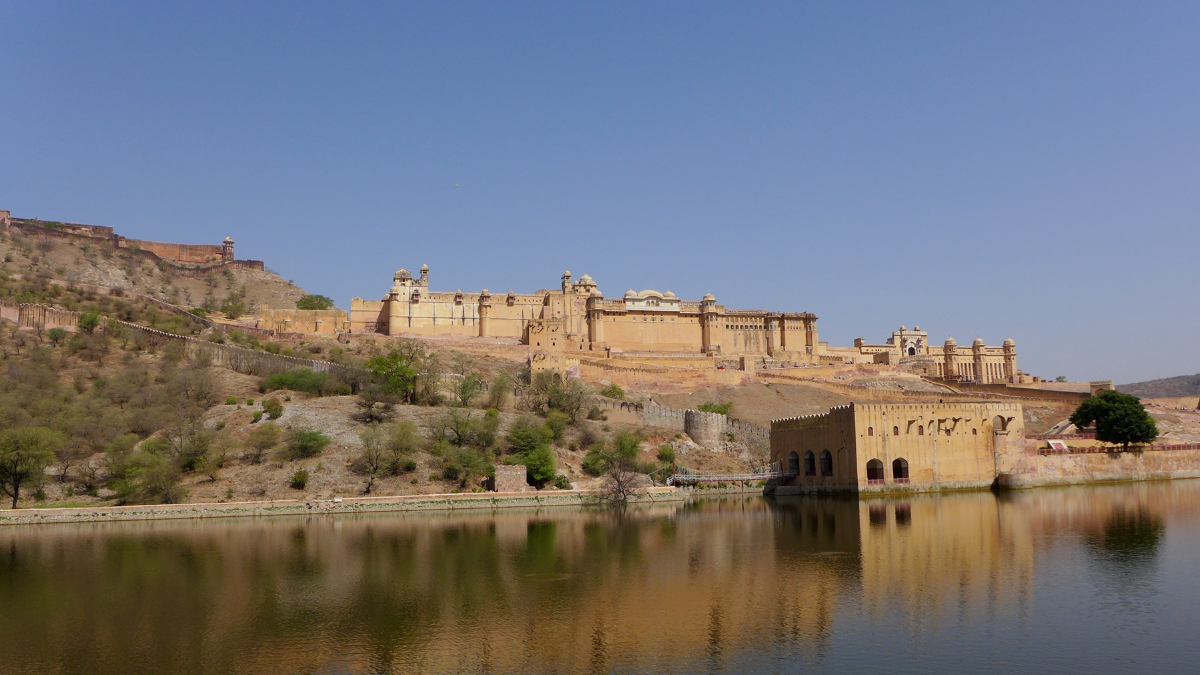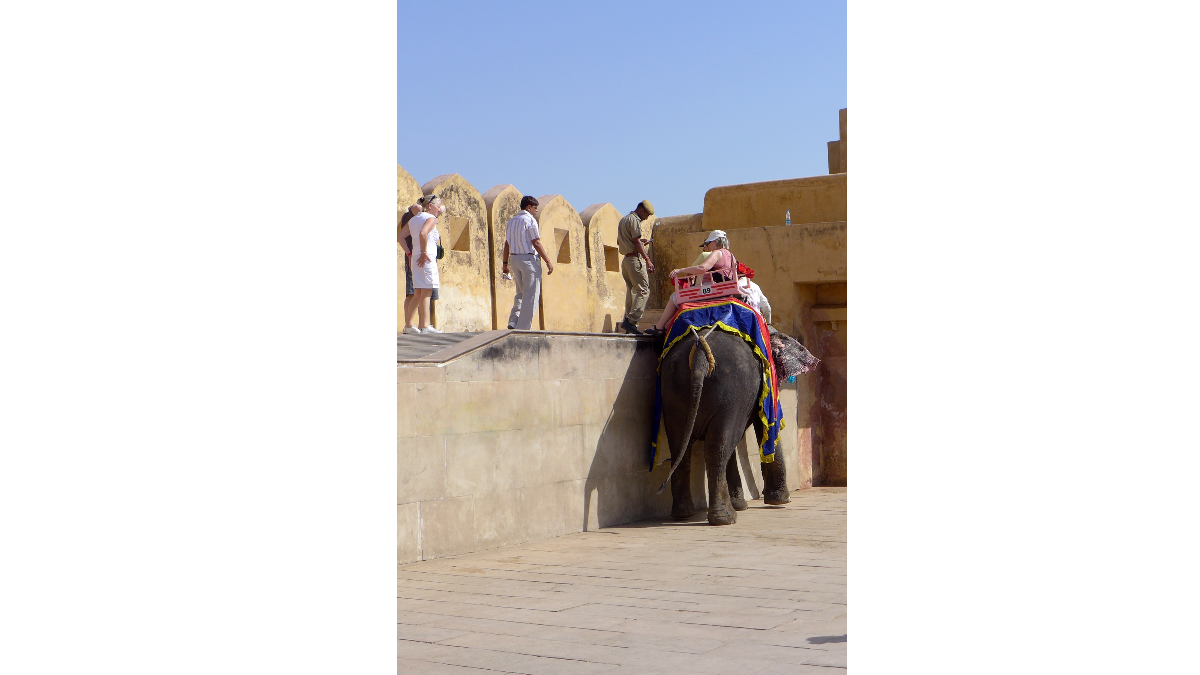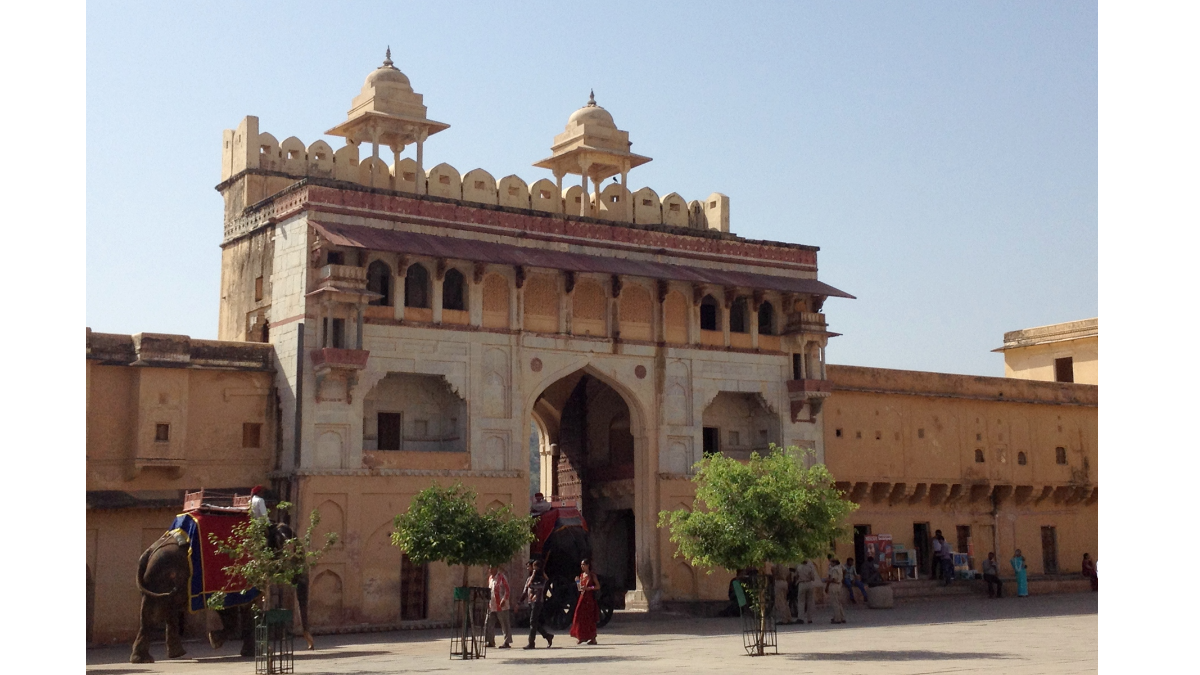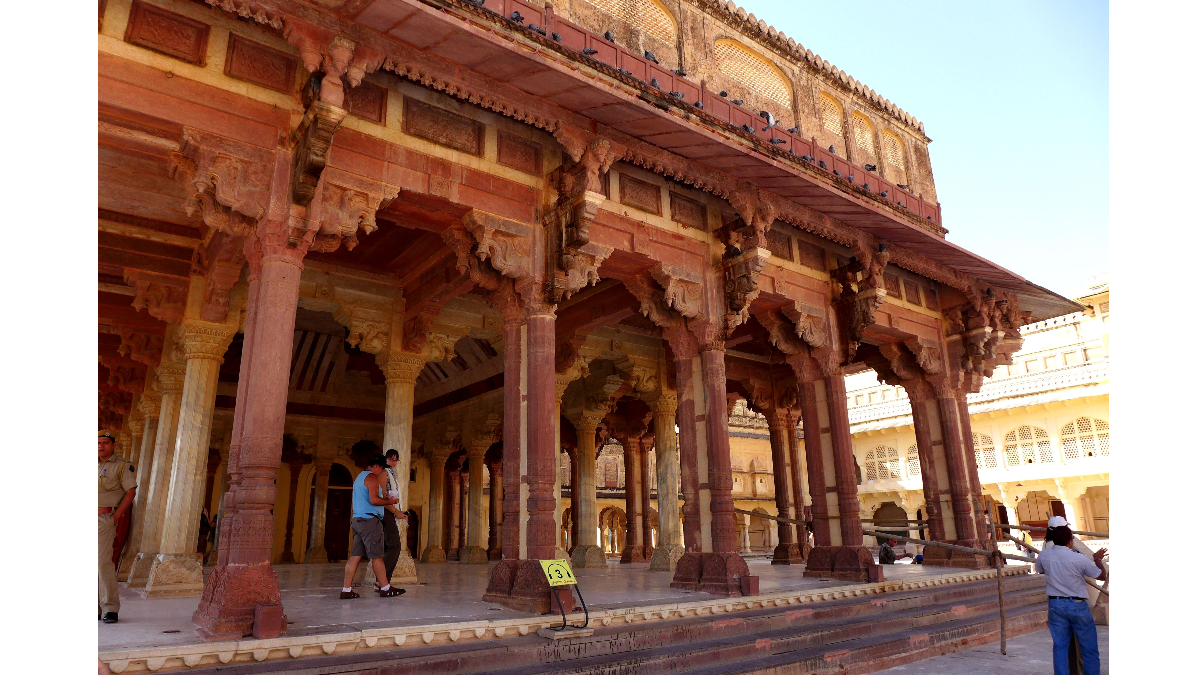
20240327
<La Vie Tang>The name of the Amber Fort

The origin of the name ‘Amber Fort’ has a variety of theories, but the most widely accepted one is that the fort, perched on the peak of a yellow sandstone hill, was built with large chunks of yellow sandstone. When the sunlight glitters on the fort at dawn or dusk, it makes the fort shine like precious amber when seen from afar, which grants the fort such a laudatory name.
Another theory argues that the fort was formerly known as ‘Amer Fort’, and the word ‘Amer’ means ‘heaven’ in Hindi. So it is accordingly translated into ‘Amber Fort’, as the pronunciation is similar to ‘amber’ in English.
Upon the order of Maharaja Man Singh I of the Rajput, at the time of the Mughal Empire in 1592, the Amber Fort was constructed on the remains of an earlier 11th century fort, taking more than 100 years. Then it served as the royal palace fort and the capital as well. When it was bequeathed to Maharaja Sawai Jai Singh II, he moved the palace and the capital to the new city of Jaipur. The Amber Fort has since then retired after completing its historical mission, and been preserved as the site of the fort up to this day.
Elephant ride through the gateway
The burning sun was high in the sky at the time. It normally takes over half an hour to walk from the foot of the mountain to the fort crowning the crest of the hill. My tour guide advised me to climb up by riding an elephant that was tethered at the foot of the mountain. With the intriguing thought of imitating the imposing manner of the Indian nobles in the past by riding through the gate on an elephant, I was really thrilled at touring the tunnel of time. But as soon as I approached the elephants in colourful ribbons, a foul smell came to me, very hard to bear. I finally had to give up riding and slowly advanced to the fort on foot.
In general, the imposing Sun Gate (Suraj Pol) is the entry for the elephant ride and the Moon Gate (Chand Pol) is only accessible by foot or car. I spent more than half an hour, with great effort, scaling the giant arch of the fort that connects a continuous stretch of battlements. Behind the arch I received a pleasant surprise when the broad central courtyard (Jaleb Chowk) came into sight — the space where kings and aristocrats returning home in triumph celebrated great victories and flaunted war trophies in ancient times.
I ascended stairs from one side of the courtyard, then went through the Loin Gate (Singh Pol) leading to the hidden beauty of the fort. Alleys crisscross in the fort, which would probably bring careless visitors back to their starting point. It is a must to closely follow the tour guide so as to save energy as well as time.
Although called a ‘fort’, the Amber Fort is in nature a palace comprising features of Mughal and Muslim styles. The domeshaped roofs on buildings, finely-latticed windows, carvings and inlays in plant patterns, and all the exquisitely detailed pieces of superb craftsmanship can be acclaimed as the acme of perfection. The fort lives up to its reputation as an architectural heritage of great importance.
I first stopped at the Hall of Public Audiences (Diwan-i-Am), the venue for the royal to receive his subjects, promulgate decrees and listen to advice and debates. The space is fairly open, the roof supported by two groups of colonnades. Exterior and interior pillars made of red sandstone and white marble respectively are crowned with elephant-head carvings, the shades of which reconcile in an elegant and harmonious manner. In addition, latticed windows with very fine trellises can be noticed above the hall. From all these I was able to have a thorough knowledge of the Diwan-i-Am, the cultural quintessence of Mughal and Rajput.
The next was the beautifully painted Ganesh Pol (Ganesha Gate), with complicated patterns in perfect symmetry, leading to the private palaces. The second floor, exclusive to royal ladies, has windows with patterns carved on the fine lattices. Ladies behind the window peeked through the glass, watching the courtyard outside, while sometimes they sprinkled flowers to greet the return of the princes.
Tang Yu Lap
Hantec Honorary Advisor









Extended Reading
集團再次榮獲中小企卓越營商夥伴獎項
BY Group Branding and Promotion FROM Hantec Group
<Corporate Sandwiches>Learning Organization (3): A Growing Team
BY Group Branding and Promotion FROM Hantec Group
《謎一樣的國家:老玩童探索以色列》New Book Sharing Conference
BY Group Branding and Promotion FROM Hantec Group
No.76, South 2 Road, Baiziwan, Chaoyang District, Beijing
(86) 010-8515 1011
11/F, Gold & Silver Comm. Bldg., 12-18 Mercer Street, Sheung Wan, Hong Kong
Room 1214, Block B, Shenzhen International Chamber of Commerce Building, Fuhua 1st Road, Futian District, Shenzhen
A753, 7F, Crystal Galleria, Yuyuan Road, Jing'an District, Shanghai
Hong Kong : (852) 2916 9000
China - Shenzhen : (86) 755-8278 8726
China - Shanghai : (86) 21-5298 3788
11F., No.197, Jingmao 2nd Rd., 115 Nangang Dist., Taipei City, Taiwan
(886) 2-2653 8199